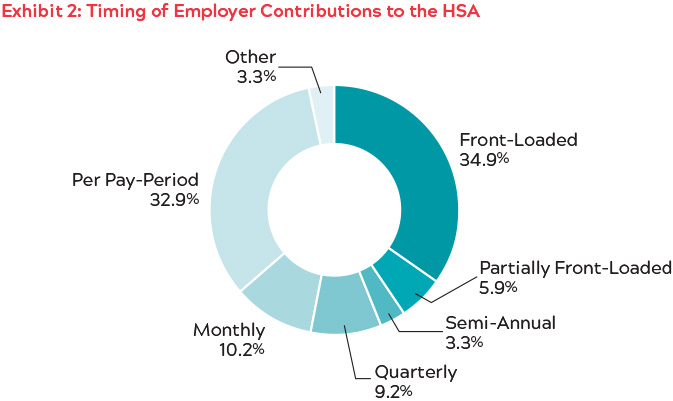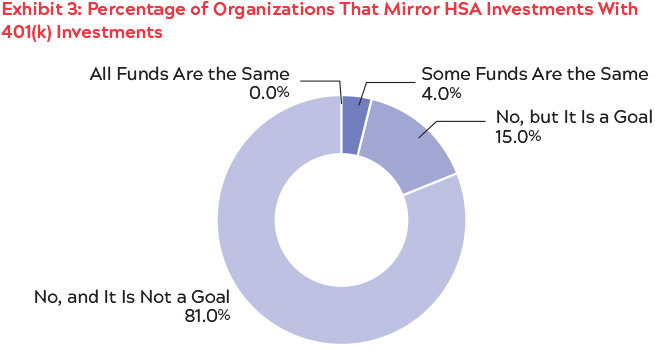Advertisement
A New Look for HSAs — Retirement Savings
PSCA’s 2nd annual HSA survey finds design improvement amid continuing concerns.
More than half of employers (51.5 percent) now position the Health Savings Account (HSA) as a retirement savings vehicle according to the Plan Sponsor Council of America’s second annual HSA benchmarking survey, sponsored by Empower Retirement, reinforcing the notion that HSAs can be a powerful retirement savings tool.
However, employers remain concerned about how to best explain HSA benefits to employees — employee education topped the list of HSA concerns for the second year in a row, though the percentage indicating so did drop five points this year to just more than half of respondents. While the top education priority for nearly half of survey respondents is explaining the HSA tax preferences, 20 percent target contribution limits as the primary goal.
HSAs have been around for more than a decade and a half, but employers and participants are only just coming to appreciate their power as an additional way to save for retirement. Employers need continued support in explaining the unique benefits of HSAs to employees — aligning it with their retirement savings programs rather than solely as a separate health benefit can help overcome some of these education barriers.
Offering the same, or some of the same, investment options in the HSA program as in the 401(k) plan can help ease the education barrier around HSAs. However, only four percent of employers are currently doing so. Among the 15 percent that would like to, provider capability (or lack thereof) is the primary reason they are unable to at this time. This is an opportunity for continued innovation with HSAs and retirement plan providers.
A detailed summary of the results follows.
Demographics
The survey received responses from 181 organizations that offer an HSA program to employees. Forty percent of employers have offered the HSA-qualifying health option to employees for two-to-five years with a third offering one for six-to-ten years. Nearly 80 percent of employers offer health options in addition to the HSA-qualifying option, though there is some variability by organization size.
Eligibility and Participation
More than sixty percent (61.3 percent) of employees enrolled in the HSA-qualifying health option when offered the opportunity. Of those that did, 90.5 percent had an HSA in 2019 and 91.1 percent made contributions to their account. (See Exhibit 1.)

The average participant contribution in 2019 was $2,595. The average account balance at the end of 2019 was $5,627 and the median was $3,169 — substantially unchanged from the $5,239 average and $3,480 median reported in 2018.
A third of respondents stated that fewer than a quarter of employees spent their entire HSA balance in 2019. Only a small percentage of employees contributed the maximum allowed.

Employer Contributions
Nearly 85 percent of employers contribute to the HSA, and nearly three-fourths provide a set dollar amount based on the coverage level (single or family). More than a third of employers “front-load” contributions at the beginning of the year while another third make contributions each pay period. (See Exhibit 2.)
Investments
The vast majority of responding organizations (83.8 percent) offer investment options for HSA contributions beyond a cash equivalent or money market. However, 80.4 percent of organizations require a minimum balance of $1,000 or more before assets can be invested.
More than 80 percent of respondents state that they do not try to mirror the HSA investment lineup with their 401(k) lineup and that doing so is not a goal. Four percent of organizations state that some of their HSA funds are the same as in their DC plan lineup, and 15 percent state that while none of their investments are currently the same, they would like to be able to do so. (See Exhibit 3.)

The largest barrier for organizations that would like to offer the same funds for the HSA as the 401(k) plan is provider capability.
Education
The majority of organizations (57.4 percent) primarily educate employees about HSAs annually during open enrollment. However, another third primarily educate employees about the HSA annually during open enrollment and at other times throughout the year. The primary and secondary topics targeted by HSA education are understanding the tax benefits of HSAs, indicated as primary by nearly half of respondents, followed distantly by contribution limits and the HSA-qualifying health plan.
Only ten percent of organizations use or suggest a default savings rate to employees for their HSA. Fewer than seven percent of organizations offer additional education to employees who do not contribute to the HSA or only contribute a nominal amount.
About half of respondents indicate that they position the HSA as part of a retirement savings strategy to employees (51.5 percent) with another 7.7 percent stating they don’t currently, but will.
Despite the wide variety of topics targeted in education efforts, education remains a top concern for sponsors. More than half of respondents indicated it as a primary concern — however, this is down a bit from 61.4 percent in 2018.
The full 2020 HSA Survey report is available for download at https://www.psca.org/research/HSA/2020report.
Hattie Greenan is the Director of Research and Communications for PSCA.
